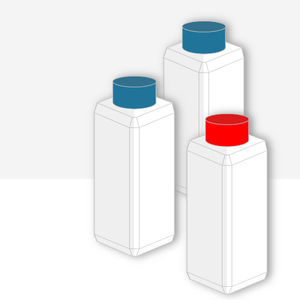
- Laboratory
- Laboratory medicine
- Albumin reagent
- Vitro Scient

- Products
- Catalogs
- News & Trends
- Exhibitions
Albumin reagent 101 seriesdiagnostic
Add to favorites
Compare this product
fo_shop_gate_exact_title
Characteristics
- Type
- albumin
- Applications
- diagnostic
Description
Albumin is a carbohydrate-free protein, representing 55 – 65% of the total plasma proteins. It is synthesized in the liver and is noted for its ability of con guration changes. It maintains the plasma colloidal osmotic pressure, transports and stores a wide variety of ligands and serves as a source of endogenous amino acids. Albumin binds and solubilizes a variety of compounds amongst which are bilirubin, calcium, and long-chain fatty acids. Albumin also binds toxic heavy metal ions and many drugs, which is why a decrease in albumin in the blood can have important pharmacokinetic consequences2.
Hyperalbuminemia is of little diagnostic significance except in dehydration. Hypoalbuminemia is very common in many diseases and stems from various factors: impaired synthesis, either primary as a result of liver disease or secondary due to diminished protein intake; increased catabolism because of tissue damage (severe burns) or inflammation; malabsorption of amino acids (Crohn’s disease); proteinuria due to nephrotic syndrome; protein loss by way of feces (neoplastic disease). In severe hypoalbuminemia plasma albumin levels are below 2.5 g/dl. The low plasma oncotic pressure allows water to move out of the blood capillaries into the tissues (edema). Albumin measurements also allow monitoring of the patient’s response to nutritional support and are a useful test of liver function3.
Exhibitions
Meet this supplier at the following exhibition(s):

Related Searches
- Assay kit
- Solution reagent kit
- Blood assay kit
- Serum assay kit
- Immunoassay assay kit
- Research reagent kit
- Diagnostic reagent kit
- Laboratory reagent kit
- Protein reagent kit
- Enzyme reagent kit
- Histology reagent kit
- Reagent medium reagent kit
- Antibody
- Clinical chemistry reagent
- Clinical chemistry analyzer
- Blood sample reagent kit
- Clinical reagent kit
- IgG test kit
- Tissue reagent kit
- Antibody assay kit
*Prices are pre-tax. They exclude delivery charges and customs duties and do not include additional charges for installation or activation options. Prices are indicative only and may vary by country, with changes to the cost of raw materials and exchange rates.














